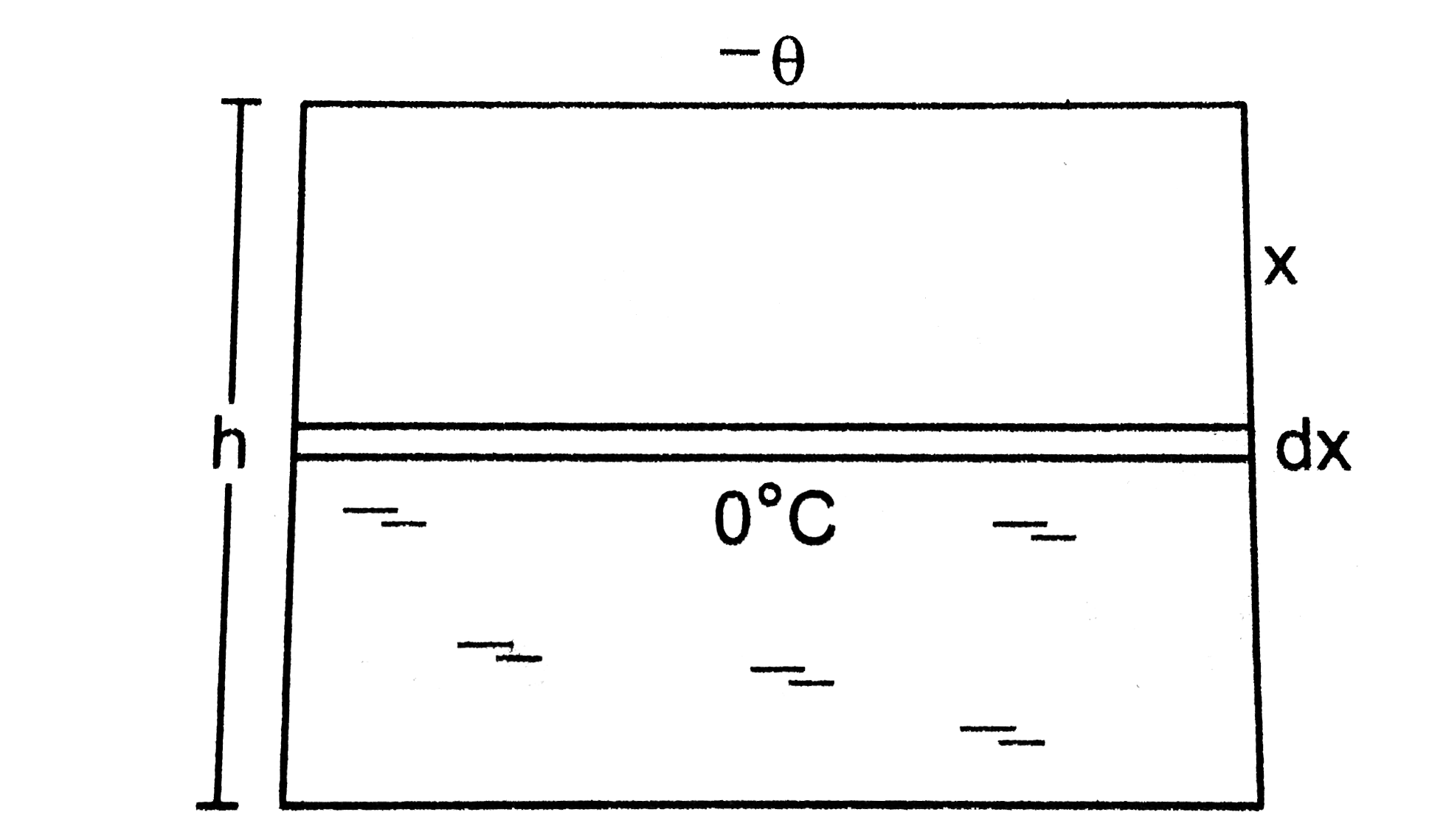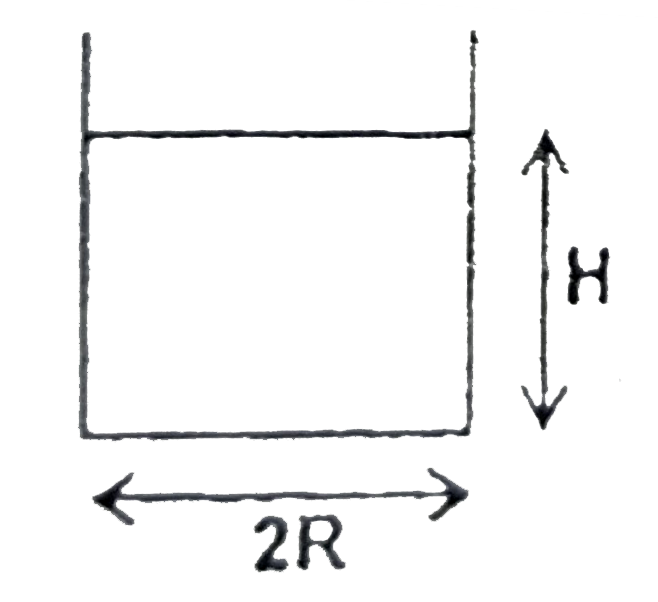On a cold winter day, the atmospheric temperature is −θ (on Celsius scale) which is below 0∘C. A cylindrical drum of height h made of a bad conductor is completely filled with water at 0∘C and is kept outside without any lid. Calculate the time taken for the whole mass of water to freeze. Thermal conductivity of ice is K and its latent heat of fusion is L. Neglect expansion of water on freezing.

suppose, the ice starts forming at time t=0 and a thickness x is formed at time t. The amount of heat flown from the water to the surrounding in the time interval t to t+dt is
ΔQ=KAθxdt . The mass of the ice formed due to the loss of this amount of heat is
dm=ΔQL=KAθxLdt . The thickness dx of ice formed in time dt is
dx=(dm)/(Ap)=(Ktheta)/(pxL)dt.or,dt=(pL)/(Ktheta)xdX.Thus,thetimeTtakenforthewho≤massofwater→eezeisgivenby<br>int_(0)^(T)dt=(pL)/(Ktheta)int_(0)^(h)xdx.or,T=(pLh^(2))/(2Ktheta)
Topper's Solved these Questions
- HEAT TRANSFERBOOK - HC VERMACHAPTER - HEAT TRANSFEREXERCISE - Short Answer
11 Videos
- HEAT TRANSFERBOOK - HC VERMACHAPTER - HEAT TRANSFEREXERCISE - Objective 1
10 Videos
- HEAT TRANSFERBOOK - HC VERMACHAPTER - HEAT TRANSFEREXERCISE - EXERCIESE
1 Videos
- HEAT AND TEMPERATUREBOOK - HC VERMACHAPTER - HEAT AND TEMPERATUREEXERCISE - Exercise
4 Videos
- INTRODUCTION TO PHYSICSBOOK - HC VERMACHAPTER - INTRODUCTION TO PHYSICSEXERCISE - Exercises
19 Videos
Similar Questions
On a cold winter day, the atmospheric temperature is −θ (on Celsius scale) which is below 0∘C. A cylindrical drum of height h made of a bad conductor is completely filled with water at 0∘C and is kept outside without any lid. Calculate the time taken for the whole mass of water to freeze. Thermal conductivity of ice is K and its latent heat of fusion is L. Neglect expansion of water on freezing.

View SolutionWhat are the values of latent heat of fusion of ice and latent heat of vapourisation for water?
View Solution
Knowledge Check
On a cold winter dry, the temperature of atmosphere is −T∘C. The cylindrical dram shown is made of insultating material and it contains water at 0∘C. If L is latent heat of fusion of ice, ρ is density of ice and KR is thermal conductivity of ice, the time taken for total mass of water to freeze is
 AρLH2KTBρLH22KTCρLH2KTDH2ρLKT
AρLH2KTBρLH22KTCρLH2KTDH2ρLKTIn an 20 m deep lake, the bottom is at a constant temperature of 4∘C. The air temperature is constant at −10∘C. The thermal conductivity of ice in 4 times that water. Neglecting the expansion of water on freezing, the maximum thickness of ice will be
A2211 mB20011 mC20mD10 mThe temperature of the water of pond is 0∘C while that of the surrounding atmosphere is −20∘C. If the density of ice is p, coefficient of thermal conductivity is k and latent heat of melting is L then the thickness Z of ice layer formed increases as function of time t as
AZ2=60kρLtBZ=√40kρLlCZ2=40KρL√tDz2=400kρLt
Calculate the amount of heat energy to be supplied to convert 4 kg of ice at 0∘C completely into water at0∘C if latent heat of fusion for ice is 80 cal/g.
View SolutionCalculate the amount of heat energy to be supplied to convert 2 kg of ice at 0∘C completely into water at0∘C if latent heat of fusion for ice is 80 cal/g.
View SolutionCalculate the molal depression constant of water. Latent heat of fusion of ice at 0∘ at 80 calories per gram
View SolutionAn ice layer of thickness d1 is floating on a pond of water. The atmospheric temperature is -T∘C. What is the time taken for the thickness of the layer to increase from d1 to d2 if L, ρ and K are the latent heat of fusion of water, density of ice and thermal conductivity of ice, respectively?
View SolutionA metallic cylindrical vessel whose inner and outer radii are r1andr2 is filled with ice at 0∘C. The mass of the ice in the cylinder is m. Circular portions of the cylinder is sealed with completely adiabatic walls. The vessel is kept in air. Temperature of the air is 50∘C. How long will it take for the ice to melt completely. Thermal conductivity of the cylinder is K and its length is l. Latent heat of fusion of L.
View Solution
